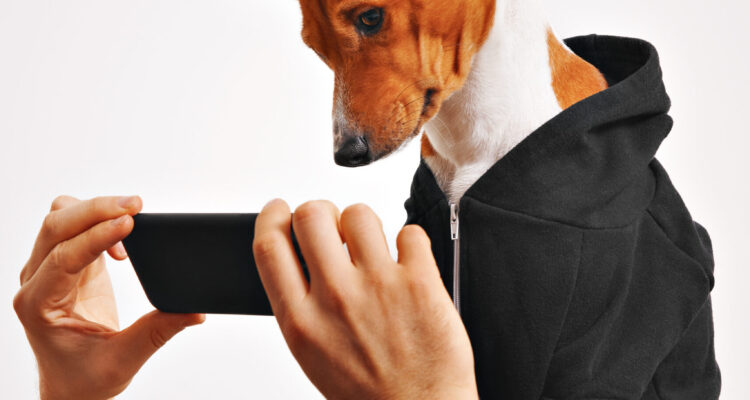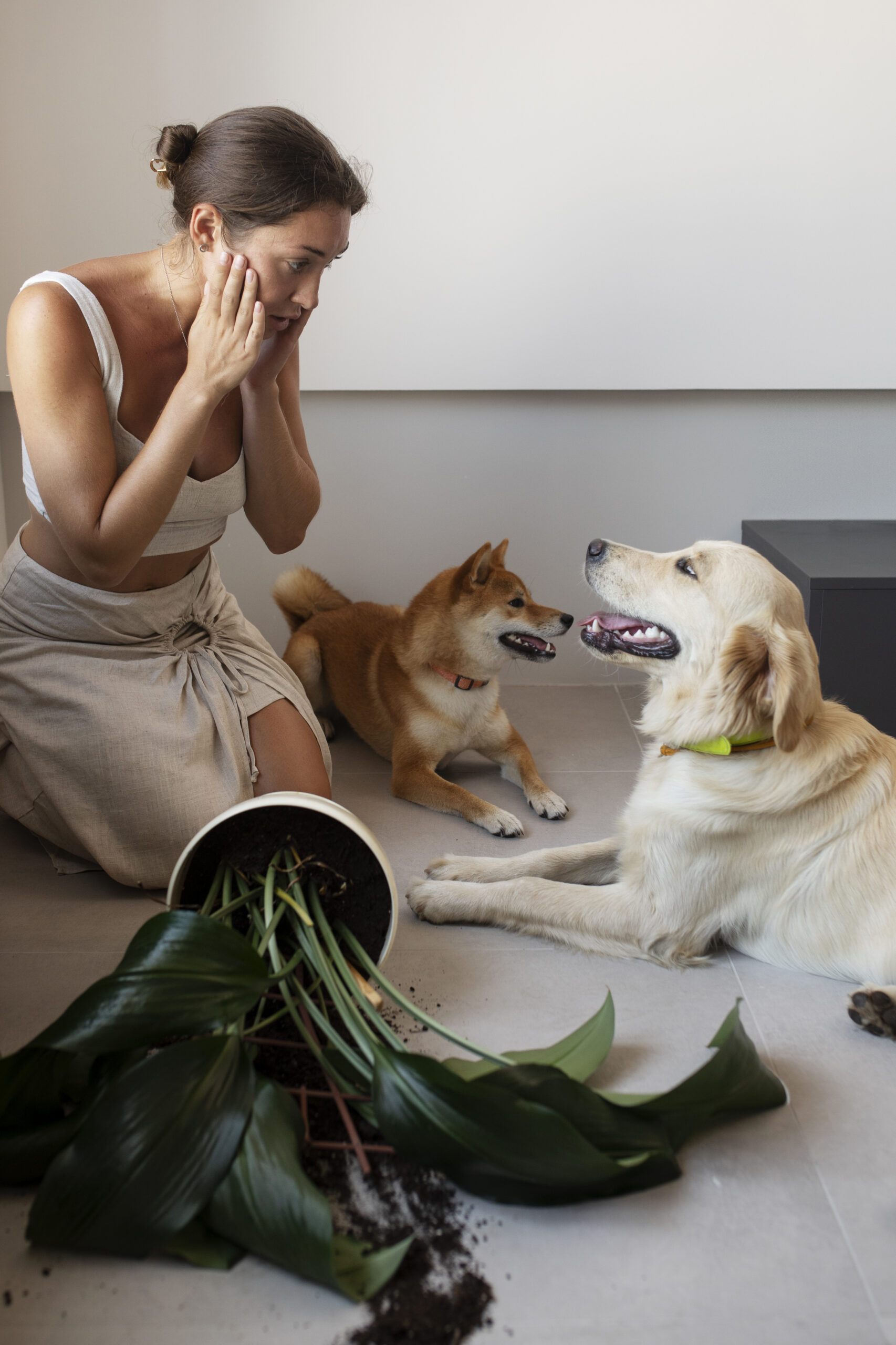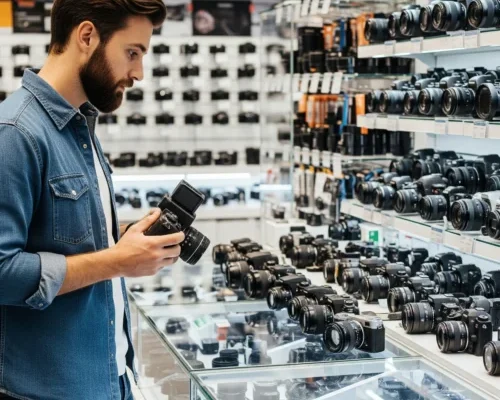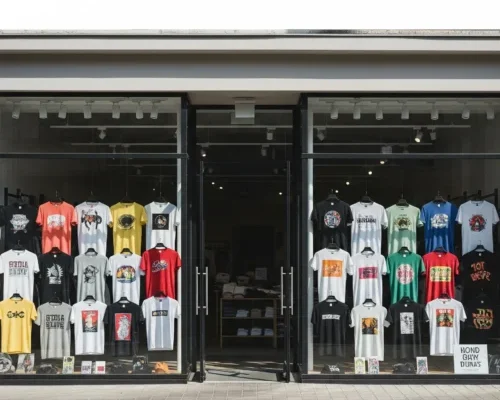Finding your dream camera can be tricky with so many models and features out there…

Capturing Perfect Pet Photos
Taking great pet photos can be challenging. But with the right tips, your pet can look fantastic. In this article, we will go over the basic equipment you need. We will also give tips for a successful photo shoot.
Additionally, we will look at techniques for lighting, composition, and editing. This guide will help you get better at pet photography. It is helpful for both skilled photographers and pet owners. You can easily capture special moments with your furry friend.
Essential Equipment for Pet Photography
 When you want to take photos of pets, having the right tools is very important. A good camera is a must, but you will need more. A sturdy tripod, a remote shutter release or a camera timer, and some props like treats and toys can help you take great pictures.
When you want to take photos of pets, having the right tools is very important. A good camera is a must, but you will need more. A sturdy tripod, a remote shutter release or a camera timer, and some props like treats and toys can help you take great pictures.
Consider getting a camera that works well in low light. A prime lens or a lens with a fast aperture can improve how you focus on your subject. Also, make sure you have enough storage space to save those special moments. Along with the right equipment, having the right mindset is also key. Pet photography focuses on capturing the unique connection between pets and their owners. Be prepared to get on the floor and have some fun.
Bring lots of treats and praise to keep your pet calm and interested. Don’t hesitate to try different angles and poses to capture the perfect shot. But even with the right equipment, it’s not enough to simply point and shoot. Understanding your pet’s personality and preparing them for the shoot are crucial steps in capturing the perfect pet photo.
By learning about their unique behaviors and routines, you can adjust your approach to help them perform better. Preparing them for the shoot will help them feel comfortable and ready to do their best.
Tips for a Stress-Free Shoot
 To take a great photo of your pet, it is important to understand their personality. Some pets are naturally more cooperative than others, so it’s essential to tailor your approach to their individual needs.
To take a great photo of your pet, it is important to understand their personality. Some pets are naturally more cooperative than others, so it’s essential to tailor your approach to their individual needs.
Begin by understanding what they like and dislike. Use this information to build trust. For instance, if your pet enjoys treats, give them as rewards for good behavior. If they are bothered by noise, try to keep the area quiet and reduce distractions.
Another important tip is to keep the shoot short and fun. Pets get bored easily, so it’s best to keep the session brief. Aim to capture a few key photos quickly, then take a break to let your pet rest. Also, let your pet set the pace of the shoot. By focusing on their needs, you can make the experience enjoyable for both of you.
Don’t forget the importance of patience. Pet photography can be tough, especially with pets that are more stubborn. Take your time, stay calm, and believe that the right shot will happen. With patience and effort, you can take a great pet photo that showcases your pet beautifully.
Preparing Your Pet
Getting your pet ready for a photo shoot is important for taking great pictures. Start by helping them get used to the studio if that’s where you will be shooting. Bring them a few days before the shoot so they can explore the space, see the camera, and meet the photographer. Use this time to help them feel comfortable wearing a collar or harness.
It’s also key to make sure your pet is clean and well-groomed. Give them a bath, trim their nails, and brush their fur. This will help your pet look and feel more relaxed in front of the camera. Remember to bring some of their favorite toys and treats to keep them calm and happy during the shoot.
Lastly, ensure your pet has enough water and a cozy place to rest. A tired or hungry pet can feel stressed, which can lead to less-than-great photos. By focusing on your pet’s needs, you can create a fun and successful photo shoot for both of you.
Lighting Up the Moment

Lighting is very important in pet photography. Understanding natural and artificial light can help you take great photos. When using natural light, look for soft, diffused light. This kind of light is gentle on your pet’s skin and eyes. You can find this light by shooting near a window or outside during the golden hour, which is right before sunset.
However, not all shoots take place near a window, and artificial light can be just as effective. Invest in a few good lights and learn how to use them to create a flattering and flattering effect. Softbox lights, for example, can create a soft, even light that is perfect for capturing the details of your pet’s face. And don’t be afraid to experiment with different angles and positions to get the desired effect.
Another important tip is to pay attention to the color temperature of your light. Warm temperatures can create a cozy and inviting feel. Cool temperatures can make your pet’s fur look bright and vibrant. By learning to use both natural and artificial light, you can create effects that improve your pet photography.
Framing Your Pet for a Perfect Shot
Composition is an important part of pet photography. Framing your pet well can make a big difference in the shot. Start by using the rule of thirds, which involves dividing your frame into thirds both horizontally and vertically. Place your pet a little to one side. You can put it on one of the lines or where two lines meet. This will make your picture more lively and engaging.
Another useful tip is to use leading lines to help direct the viewer’s attention to your pet. You can do this by placing your pet in front of a patterned background. You can also use a plain background to create depth. Finally, try different angles and perspectives to make your pictures more interesting.
Finally, consider the negative space around your pet. Leaving some empty space around your pet can create a sense of simplicity and elegance, while also drawing the viewer’s eye to your pet. By mastering composition, you can create different effects. This will take your pet photography to the next level.
Capturing Candid Moments
Taking natural photos is important in pet photography. To get real photos of your pet, aim to photograph them while they are being themselves, without any posing or forced smiles. You can do this by taking pictures in a natural setting, such as your home or a park. Use a camera with a fast shutter speed to catch the action.
Another important tip is to pay attention to your pet’s body language. If they’re tense or stiff, they may not be feeling their best, and that can translate to a less-than-authentic photo. Find moments of relaxation and happiness, like when they are sleeping or playing. Capture these moments in your photos.
Don’t hesitate to try new ideas. Pet photography is all about showing your pet’s unique personality and spirit. Be willing to take risks and test different ways to capture the photos you want. By taking candid photos and being open to risks, you can create many genuine and engaging pet pictures.
How to Post-Process Your Pet Photos
Post-processing is an important step in pet photography. Begin with simple editing software like Adobe Lightroom or Photoshop. Use these tools to change the exposure, contrast, and color balance of your photos. This can help to bring out the best in your pet’s fur, eyes, and skin tone.
Another important tip is to pay attention to the noise and grain in your photos. Pet photography often involves shooting in low light, which can result in noise and grain. Use noise reduction software or plugins to lessen these effects. Also, think about using a camera that performs well in low light. This can help reduce the need for noise reduction.
Finally, don’t overdo it with the editing. Pet photography focuses on capturing your pet’s natural beauty and personality. Try not to over-edit or retouch your photos. By learning how to edit and enhance your photos, you can create a range of stunning and professional-looking pet photos.
From Snap to Share
Sharing your pet photos online can be a great way to connect with other pet lovers and showcase your photography skills. When publishing your photos online, start by choosing a platform that allows you to share your photos with others, such as Instagram or Flickr.
Use hashtags to reach more people. Also, add a caption to your photos. This gives context and shares the story behind the image.
Another important tip is to pay attention to the file format and resolution of your photos. Make sure your photos are in a format that works with the platform you are using. Also, use a larger file size. This will help your photos look their best when shared online.
Finally, don’t be afraid to experiment and try new things. Pet photography focuses on capturing your pet’s unique personality and spirit. Be open to taking risks and trying new methods to get the photos you want.
Taking the perfect pet photo can be tough. However, with the right tips and tricks, your furry friend can look great. To take the perfect picture, learn about the right equipment. Understand your pet’s personality. Prepare your pet for the shoot. From mastering natural and artificial light.
Read Next: Paw-some Photos: Tips for Pet Photography



